On View
Collector Beth Rudin DeWoody Names 7 of the Most Dazzling Works to Grace Her New Florida Art Space
The Bunker in West Palm Beach will house DeWoody's 10,000-work art collection.
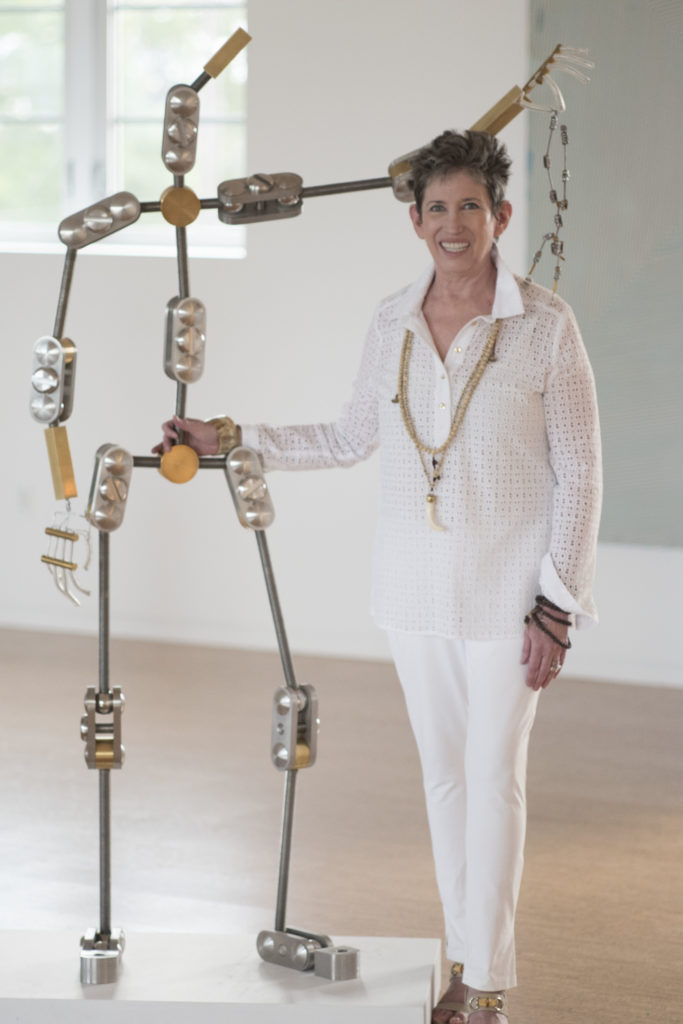
The Bunker in West Palm Beach will house DeWoody's 10,000-work art collection.

Collectors like Beth Rudin DeWoody face an enviable problem: They own so much art, they have no place to hang it. That’s why DeWoody opened the Bunker, a new art facility in West Palm Beach, Florida, which was unveiled to select VIPs during Miami Art Week this past December.
“I had a lot of stuff down in storage,” DeWoody told artnet News. “I was always sad that the work couldn’t be seen.” Her collection currently numbers more than 10,000 works of art, furniture, and design objects.
DeWoody bought her first work 1969. “It was a drawing by Benny Andrews. He was my teacher at the New School, and I’ve kept it all these years.”
The Bunker is a project that’s been in the works for four or five years, since a downturn in the real estate market allowed her to purchase a 1920s Art Deco building that once served as a munitions factory.
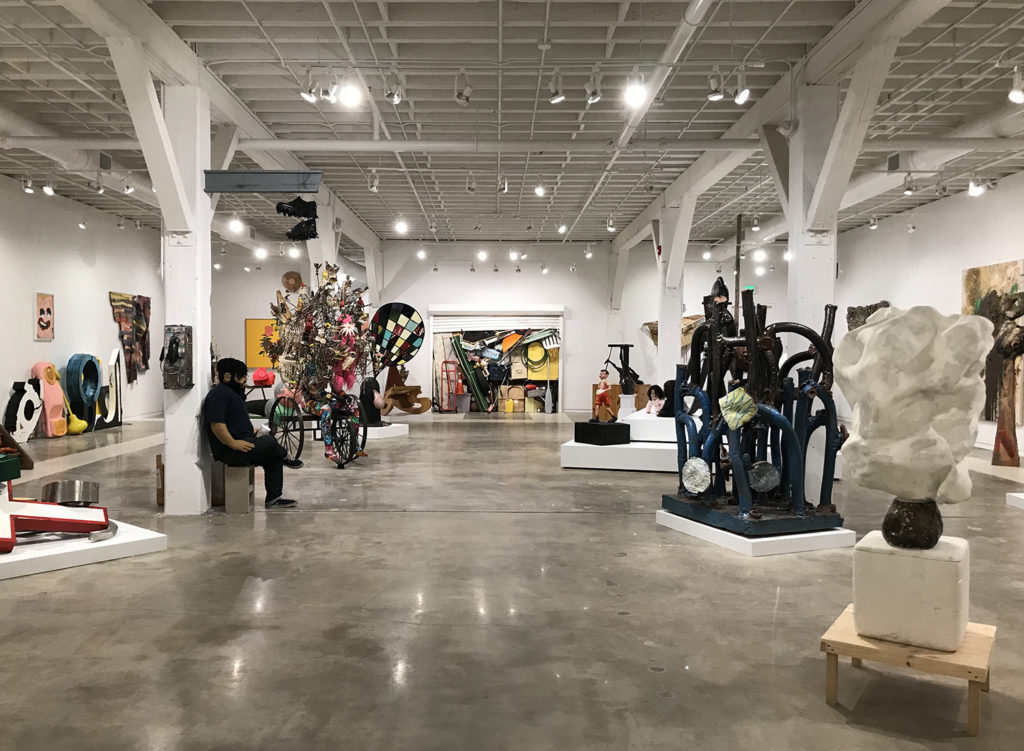
Beth Rudin DeWoody’s private art facility, the Bunker. Photo courtesy of Beth Rudin DeWoody.
Now, the newly renovated 20,000-square-foot building features storage as well as exhibition space. Its inaugural show, curated by collection staffers Phillip Estlund, Laura Dvorkin, and Maynard Monrow, features such artists as Nicole Eisenman, George Condo, Marilyn Minter, Larry Bell, Al Loving, Nick Cave, Cindy Sherman, Robert Longo, and Hank Willis Thomas.
For DeWoody, the best part has been the opportunity to see, sometimes for the first time, the works in her collection. “A lot of the works I hadn’t seen out before—I bought it and it went right into storage!” DeWoody said. “I love to see how things play off one another.”
The Bunker plans to host one show per year, open only by invitation. (It will be up to DeWoody’s children to decide if they want to take the Bunker public some day, she said.)
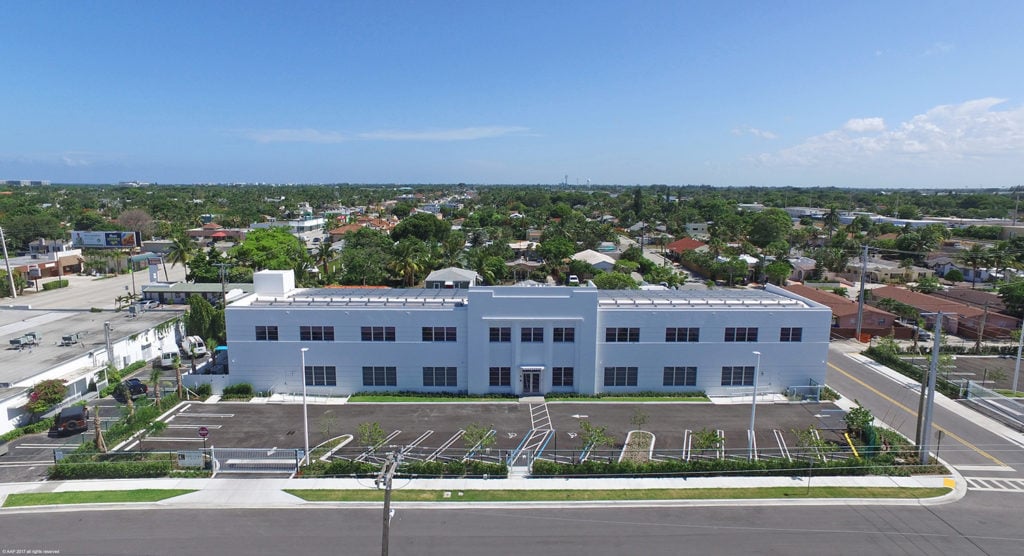
Beth Rudin DeWoody’s private art facility, the Bunker. Photo courtesy of Beth Rudin DeWoody.
Taking a broader look at the works she’s purchased over the years, broad themes started to emerge—the exhibition has a room featuring food art, and another for works based on heads, for example—but DeWoody doesn’t collect with these ideas in mind. “I’ve read people talking about my collection and it’s ‘oh wow, they’re seeing all this stuff in it that I don’t see,'” she said. When it comes to making a purchase, “it’s just a gut feeling. I either like it, or I don’t.”
“Beth is very democratic, and that’s what I think makes her such a unique collector,” said Dvorkin, adding that DeWoody is unafraid to juxtapose big names with emerging figures, and that she “goes for the challenging works.”
“I’m just not scared of difficult subjects,” DeWoody said. “It doesn’t have to be provocative to be of interest to me, but I don’t shy away from that.”
To get a feel for the Bunker’s collection, artnet News sat down with DeWoody to talk about seven of the works she’s most excited about in its debut show.
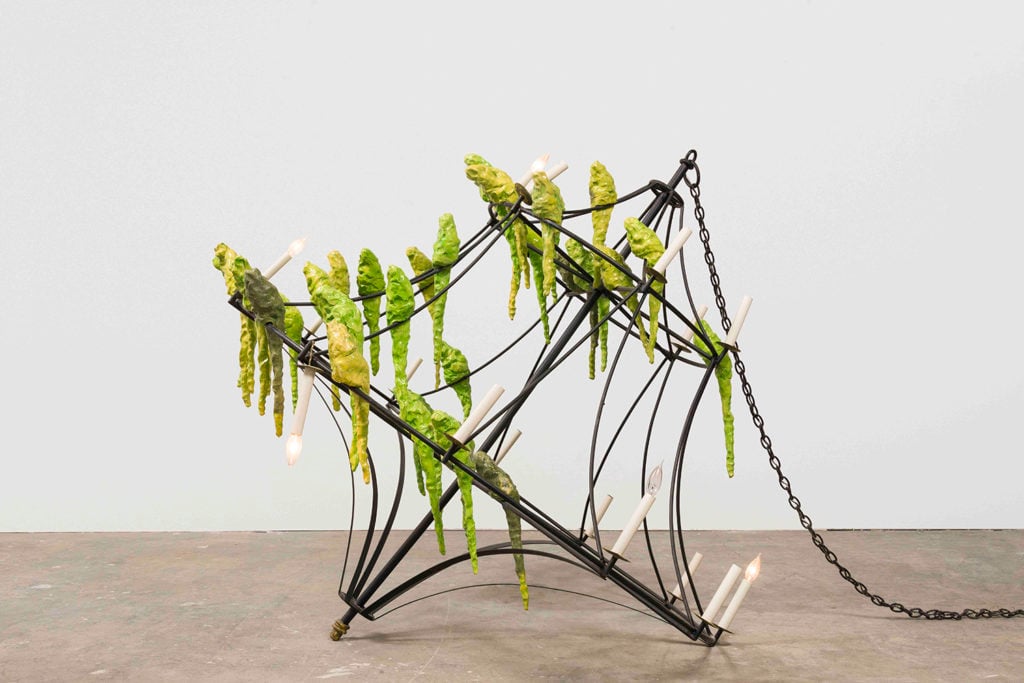
Kathleen Ryan, Untitled (Chandelier), 2015. Photo courtesy of Josh Lilley Gallery, London.
Kathleen Ryan is a young California artist, and I visited her studio with a group from the Hammer Museum. She had amazing works, including, I think, this piece. It is a glazed ceramic chandelier. I just fell in love in with it. I always wanted it to be at the Bunker. Later I bought a piece by Evan Holloway, which is a big lamp with plants, and I always had this vision of them being close to each other, which now they are!
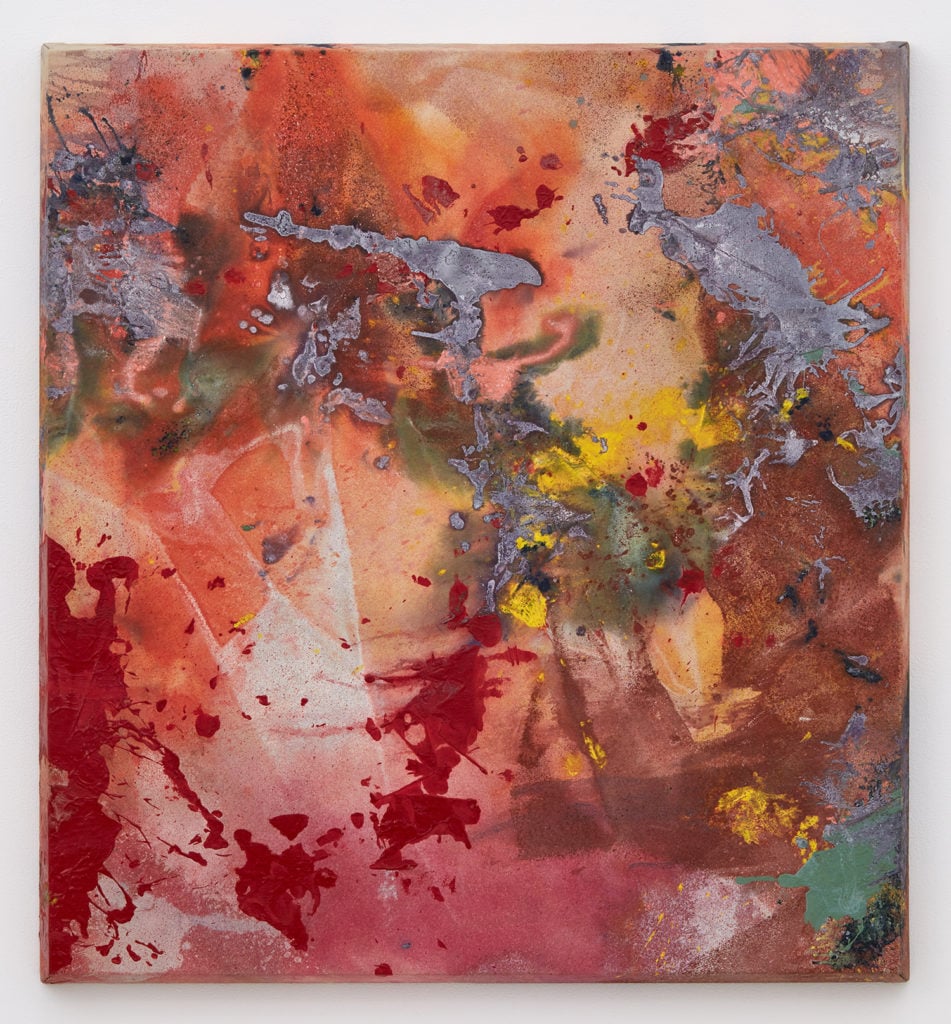
Sam Gilliam, Clear Around (1973). Courtesy of David Kordansky Gallery, Los Angeles.
I had bought an early, hard-edged Sam Gilliam piece from Kordansky Gallery in LA. He’s a very important African American artist from the Washington, DC, area. Then the gallery showed me this beautiful 1973 abstract acrylic on canvas. I just saw it and had to have it. It’s going on loan to the Taubman Museum of Art in Virginia for “Reclamation! Pan-African Works from the Beth Rudin DeWoody Collection.” It’s one of the historical works in my collection.
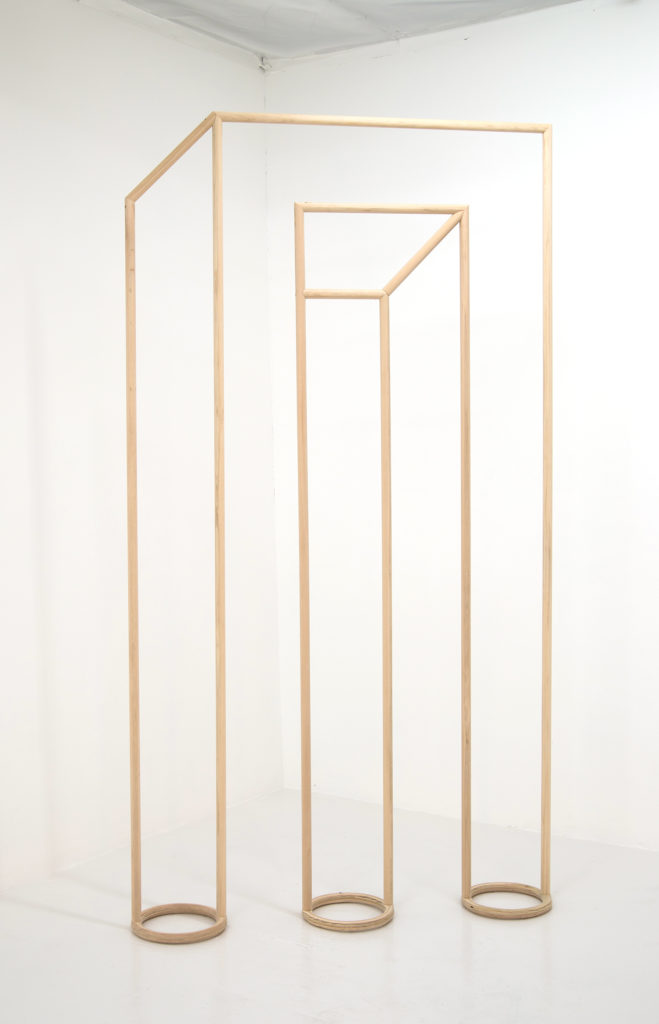
Kenneth Zoran Curwood, Don Van Blivet (2016). Photo courtesy of Club Pro, Los Angeles.
Kenneth Zoran Curwood is a young, Brooklyn-based artist. There’s a gallery in Los Angeles, a funky little space called Club Pro that Carlye Packer runs. I saw a group show and there was this sculpture by Kenneth and I loved it. At the Bunker it has been placed upstairs with with a lot of early works including work by Tony Smith and other Minimalist artists.
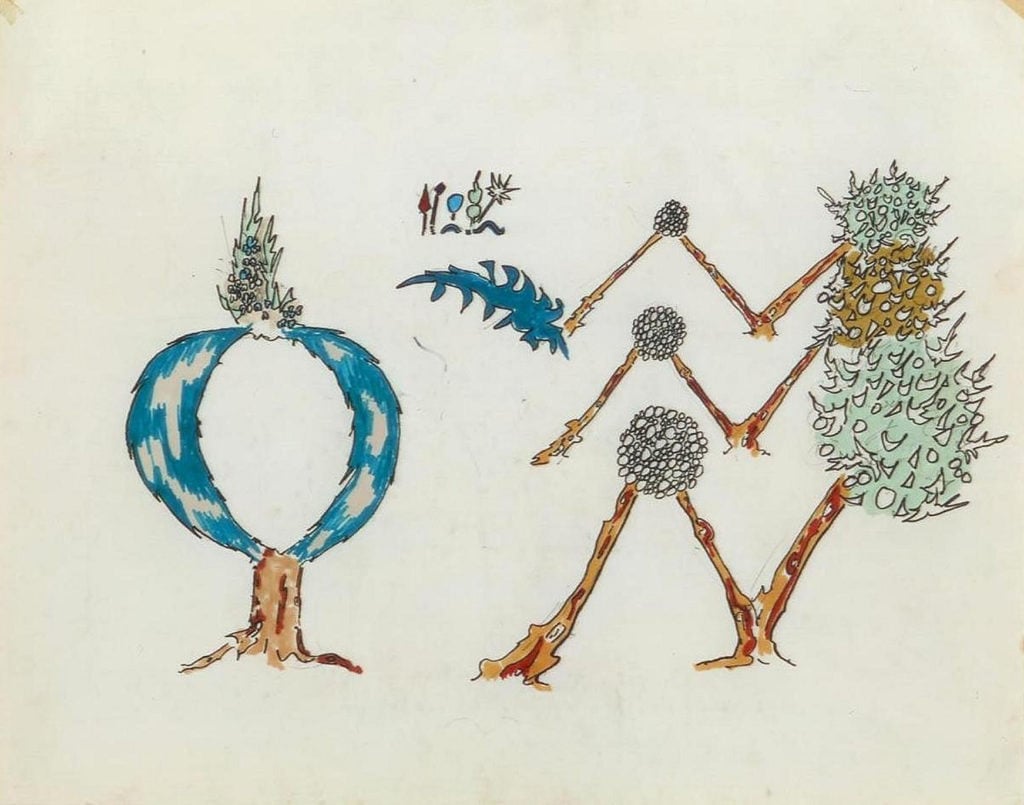
Gordon Matta-Clark, Tree Forms (1971). Courtesy of David Zwirner, New York.
I’ve always loved Gordon Matta-Clark’s work. This is a drawing from 1971. I got it at David Zwirner, and it’s really different from a normal Matta-Clark. It doesn’t have the slashes. I’ve paired it with other works that are either really early works or aren’t typical of the artist.
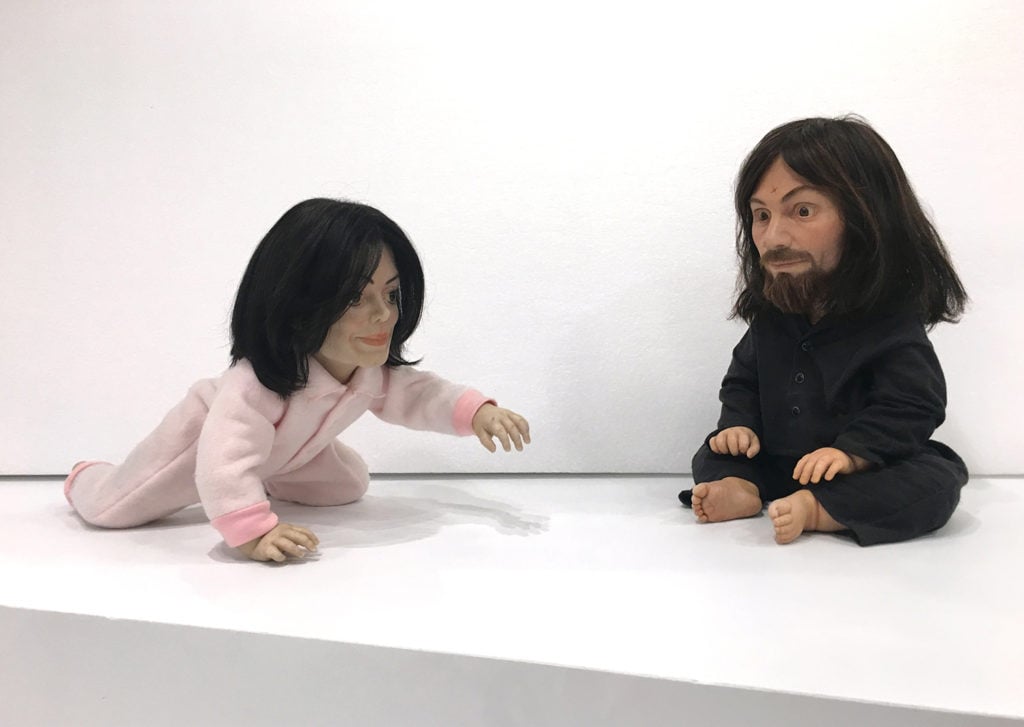
John Waters, Playdate (2006). Photo courtesy of Marianne Boesky Gallery, New York.
One my favorite pieces is this John Waters. It’s a silicone sculpture of Michael Jackson and Charles Manson. It’s funny, they were both alive when he made it. John Waters has such a quirky sense of humor. He used to say that people were at their sexiest when they were under arrest. This piece is amazing and I used to have my apartment in New York in my daughter’s room and of course she would freak out.
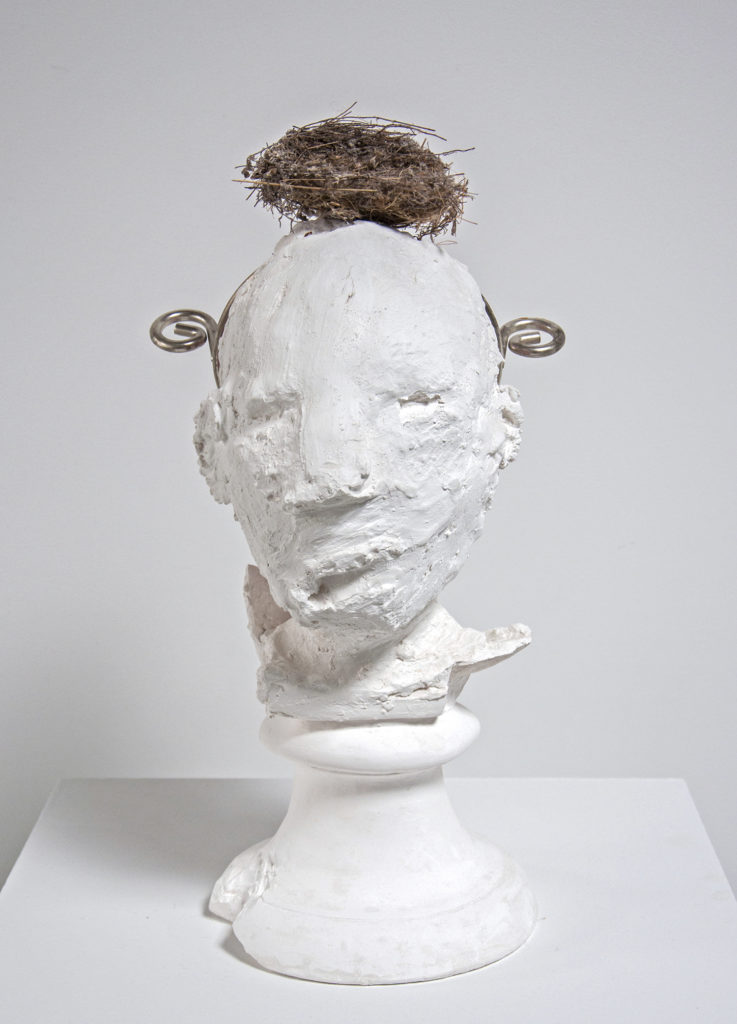
Karon Davis, Untitled (2016). Photo courtesy of Wilding Cran Gallery, Los Angeles.
Karon Davis is the widow of Noah Davis, who founded the Underground Museum in LA. She’s amazingly talented, besides keeping her husband’s vision going. She was in a show at Wilding Cran Gallery in Los Angeles, which I just did an exhibition with. She was doing these plaster figures, and Noah had just died. There’s a head that’s supposed to be his head. At the Bunker I have a whole display of different heads.
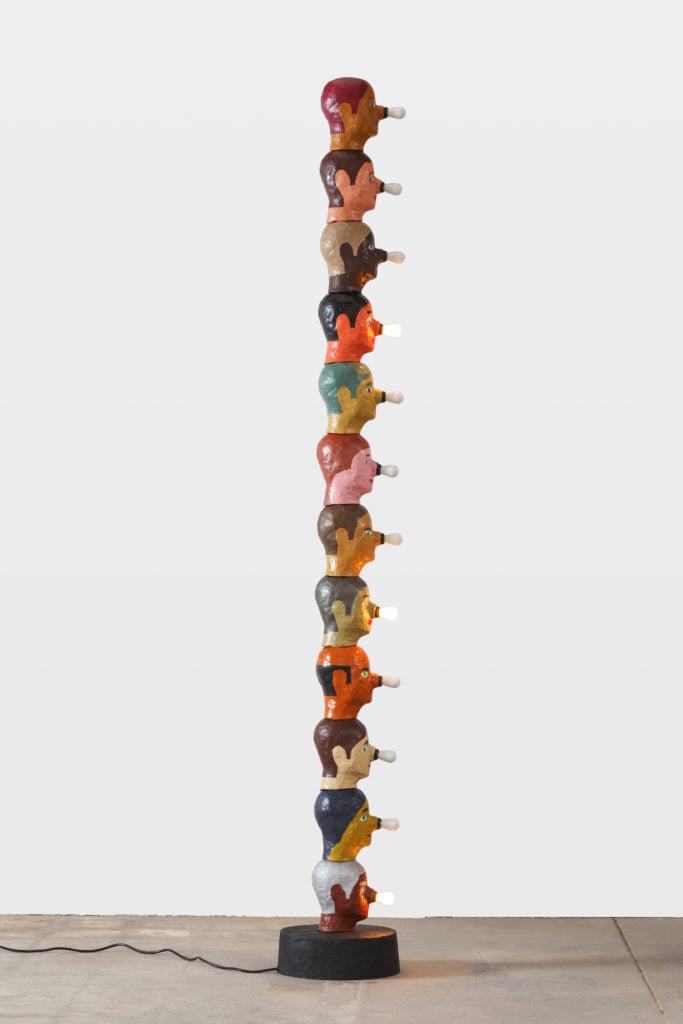
Evan Holloway, Dozen (2015). Photo courtesy of David Kordansky Gallery, Los Angeles.
It’s cast aluminum, powder coated, and it’s heads one on top of the other. Evan is someone who I had bought something from years ago and then didn’t hear much about. Now all of a sudden he’s become a really hot artist.